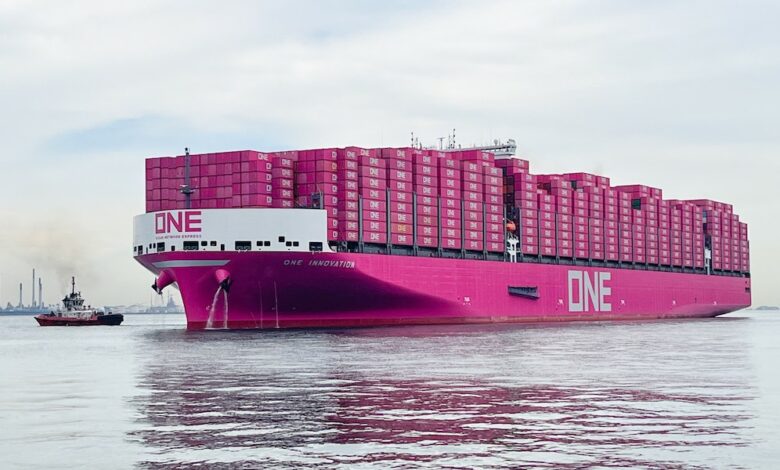Form follows function when it comes to ship design

What will ships of the future look like? For those hoping for something more atheistically pleasing, don’t hold your breath, writes James Wilkes from Gray Page.
American architect Louis Sullivan (1856 – 1924) – the ‘father of the skyscraper’ and ‘father of modernism’ – is credited with the axiom ‘form follows function’ by which he meant the purpose of a building should be the starting point for its design.
The principal purpose of merchant ships has not changed for millennia; being to carry cargo by sea from one place to another. Naturally, as the nature of cargo and demand for goods has evolved so has ship design. Ships have become bigger, faster, safer, efficient. Better all round at the thing they are built to do.
They have not, however, become more aesthetically pleasing. Aesthetics has been the trade-off for unquestionable practicality.
Frank Lloyd Wright (1867 – 1959), the American architect who designed the Guggenheim Museum, worked for Sullivan and extended his mentor’s theory. Wright said, “Form follows function – that has been misunderstood. Form and function should be one, joined in a spiritual union.”
Digital technology and design AI are brilliant at giving us a window into a future where that trade-off is reconciled. Sleeker-looking ships, with hard angles replaced by rounder profiles. Rigid sail technology resplendent atop cargo decks. Bridge and accommodation structures looking less like they were conceived while playing with Lego and then simply rendered that way in steel at a yard. Perhaps in shipping, we are on the verge of spiritual union? Where, with a tad more ambition, form and function can be one.
Perhaps: but it’s difficult to underestimate the challenge of translating beautiful design concepts into practical reality because, lest we forget, the people who actually decide what ships look like are card carrying members of the Costocracy, for whom aesthetics is defined largely by the elegance of their spreadsheets.
It’s not that the requirements of the Costocracy are unreasonable. Merchant shipping is a savagely commercial pursuit and, unlike a building, the aesthetics of a ship will not add anything to its value, nor will the value of a ship appreciate over time (normally).
Moreover, very few of today’s ships will be around in 50 or 100 years’ time; to be admired, studied and valued. Ships are assets to be worked as hard as is safe and economically efficient to do, before they are put to the breakers torch.
No. It’s just a shame that the requirements of the Costocracy are so practically boring and aesthetically moribund.
We look back to the tea clippers of the Sovereign of the Seas and Cutty Sark era, and great ocean liners such as Queen Mary and SS United States, because they were wonderful looking ships.
We admire a small number of today’s ships for their looks too, even if we don’t say so in public (who wants to be the weirdo with the “have you seen the wonderful lines on that new ONE-chartered megamax?” conversation-starter?).
Aesthetics do matter, because there is a right side to our brains as well as a left. However, the purpose of ships is not to be aesthetically pleasing. They aren’t supposed to be fine art, sculpture or prize-winning buildings. They are not designed especially to be good looking. They are designed to be eminently practical.
Therefore, while Frank Lloyd Wright may have had a point when it comes to buildings – and even then the Guggenheim Museum has art and architectural critics – ship design is more Sullivan. Form follows function, and until the function of merchant ships changes, in 2030 they will probably look very much like they do now.

Interestign one, i#m not sure if the comaprison to liners is fair, The Queen Mary and SS united states i’d suggest shoud be more directly compared to a cruise ship or worst case a top end ferry, and asthetics play more of a role when paying passengers are aboad. The tea clippers, may have had some minor asthetic add ones, but surely the main design was build on a veruy simialr basis to the ‘form follow function’ approch, ie they were streamlined to allow max speed from the sails, designed for max cargo capapcity. We may look back and think its beautiful, but trhe few historial exampels we have to show off today were likley not rep4r4esntative of the majority of boats, and likley look a lot smarter in the museums and historial dockyards than they did 150 years ago.
I suppos e a lot of what i’m saying is surely old ships are considered beautiful jsut becuse of some sort of in built nostalga we might have? (or at least in part?)
The tyranny of gravity is to blame for what our ships look like, in that cargo that cannot be driven on or off a ship will find its way aboard using gravity, be that to flow into a tank through pipes and valves or vertically into a hole through a hatch or on top of a hatch, using a crane. This defines what our ships look like.
This works as long as energy to propel ships remains cheap.
Increase the price of energy in a serious way and things will start to look very different.
The price of energy, as we are dimly starting to realise, is low because it doesn’t include the cost of the environmental damage done by using it.
Charge for that at the proper price and suddenly ships will start to look far more streamlined. Victorian steamers were sleek to cut down windage, just as their sailing ship ancestors had become.
If we need to put masts where the hatches are now, masts will be put there and the hatches will migrate to somewhere else – the return of the side port loader, maybe.
The shape of ships will change on cost grounds.